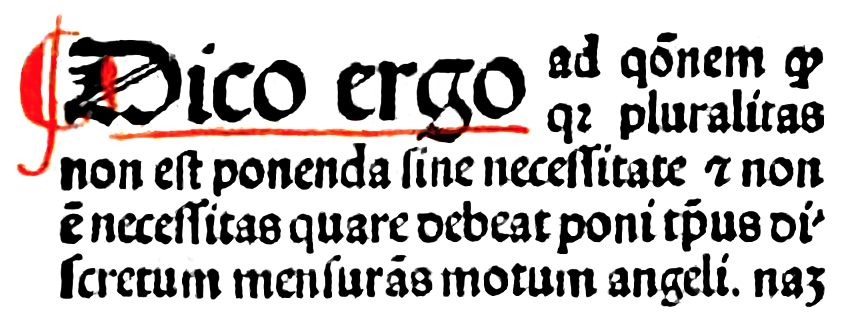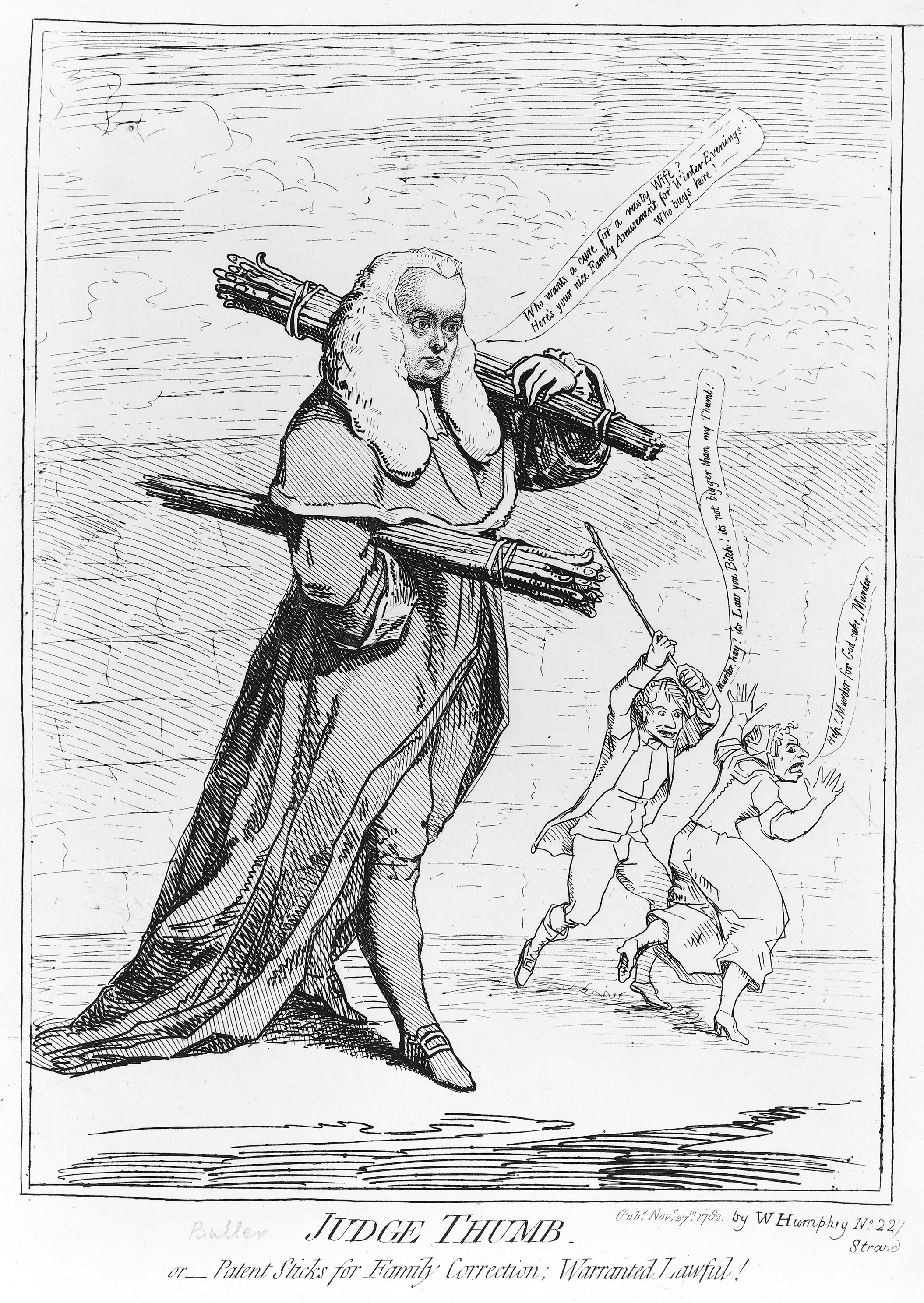|
Heuristic Argument
A heuristic argument is an argument that reasons from the value of a method or principle that has been shown experimentally (especially through trial-and-error) to be useful or convincing in learning, discovery and problem-solving, but whose line of reasoning involves key oversimplifications that make it not entirely rigorous. A widely used and important example of a heuristic argument is Occam's Razor. It is a speculative, non-rigorous argument that relies on analogy or intuition, and that allows one to achieve a result or an approximation that is to be checked later with more rigor. Otherwise, the results are generally to be doubted. It is used as a hypothesis or a conjecture in an investigation, though it can also be used as a mnemonic as well. See also *Empirical relationship *Heuristic *Probabilistic method *Rule of thumb In English language, English, the phrase ''rule of thumb'' refers to an approximate method for doing something, based on practical experience rather than ... [...More Info...] [...Related Items...] OR: [Wikipedia] [Google] [Baidu] |
Argument
An argument is a series of sentences, statements, or propositions some of which are called premises and one is the conclusion. The purpose of an argument is to give reasons for one's conclusion via justification, explanation, and/or persuasion. Arguments are intended to determine or show the degree of truth or acceptability of another statement called a conclusion. The process of crafting or delivering arguments, argumentation, can be studied from three main perspectives: the logical, the dialectical and the rhetorical perspective. In logic, an argument is usually expressed not in natural language but in a symbolic formal language, and it can be defined as any group of propositions of which one is claimed to follow from the others through deductively valid inferences that preserve truth from the premises to the conclusion. This logical perspective on argument is relevant for scientific fields such as mathematics and computer science. Logic is the study of the form ... [...More Info...] [...Related Items...] OR: [Wikipedia] [Google] [Baidu] |
Trial-and-error
Trial and error is a fundamental method of problem-solving characterized by repeated, varied attempts which are continued until success, or until the practicer stops trying. According to W.H. Thorpe, the term was devised by C. Lloyd Morgan (1852–1936) after trying out similar phrases "trial and failure" and "trial and practice". Under Morgan's Canon, animal behaviour should be explained in the simplest possible way. Where behavior seems to imply higher mental processes, it might be explained by trial-and-error learning. An example is a skillful way in which his terrier Tony opened the garden gate, easily misunderstood as an insightful act by someone seeing the final behavior. Lloyd Morgan, however, had watched and recorded the series of approximations by which the dog had gradually learned the response, and could demonstrate that no insight was required to explain it. Edward Lee Thorndike was the initiator of the theory of trial and error learning based on the findings h ... [...More Info...] [...Related Items...] OR: [Wikipedia] [Google] [Baidu] |
Problem-solving
Problem solving is the process of achieving a goal by overcoming obstacles, a frequent part of most activities. Problems in need of solutions range from simple personal tasks (e.g. how to turn on an appliance) to complex issues in business and technical fields. The former is an example of simple problem solving (SPS) addressing one issue, whereas the latter is complex problem solving (CPS) with multiple interrelated obstacles. Another classification of problem-solving tasks is into well-defined problems with specific obstacles and goals, and ill-defined problems in which the current situation is troublesome but it is not clear what kind of resolution to aim for. Similarly, one may distinguish formal or fact-based problems requiring G factor (psychometrics), psychometric intelligence, versus socio-emotional problems which depend on the changeable emotions of individuals or groups, such as Emotional intelligence, tactful behavior, fashion, or gift choices. Solutions require suff ... [...More Info...] [...Related Items...] OR: [Wikipedia] [Google] [Baidu] |
Heuristic
A heuristic or heuristic technique (''problem solving'', '' mental shortcut'', ''rule of thumb'') is any approach to problem solving that employs a pragmatic method that is not fully optimized, perfected, or rationalized, but is nevertheless "good enough" as an approximation or attribute substitution. Where finding an optimal solution is impossible or impractical, heuristic methods can be used to speed up the process of finding a satisfactory solution. Heuristics can be mental shortcuts that ease the cognitive load of making a decision. Context Gigerenzer & Gaissmaier (2011) state that sub-sets of ''strategy'' include heuristics, regression analysis, and Bayesian inference. Heuristics are strategies based on rules to generate optimal decisions, like the anchoring effect and utility maximization problem. These strategies depend on using readily accessible, though loosely applicable, information to control problem solving in human beings, machines and abstract i ... [...More Info...] [...Related Items...] OR: [Wikipedia] [Google] [Baidu] |
Occam's Razor
In philosophy, Occam's razor (also spelled Ockham's razor or Ocham's razor; ) is the problem-solving principle that recommends searching for explanations constructed with the smallest possible set of elements. It is also known as the principle of parsimony or the law of parsimony (). Attributed to William of Ockham, a 14th-century English philosopher and theologian, it is frequently cited as , which translates as "Entities must not be multiplied beyond necessity", although Occam never used these exact words. Popularly, the principle is sometimes paraphrased as "of two competing theories, the simpler explanation of an entity is to be preferred." This philosophical razor advocates that when presented with competing hypotheses about the same prediction and both hypotheses have equal explanatory power, one should prefer the hypothesis that requires the fewest assumptions, and that this is not meant to be a way of choosing between hypotheses that make different predictions. Similarl ... [...More Info...] [...Related Items...] OR: [Wikipedia] [Google] [Baidu] |
Empirical Relationship
In science Science is a systematic discipline that builds and organises knowledge in the form of testable hypotheses and predictions about the universe. Modern science is typically divided into twoor threemajor branches: the natural sciences, which stu ..., an empirical relationship or phenomenological relationship is a relationship or correlation that is supported by experiment or observation but not necessarily supported by theory. Analytical solutions without a theory An empirical relationship is supported by confirmatory data irrespective of theoretical basis such as first principles. Sometimes theoretical explanations for what were initially empirical relationships are found, in which case the relationships are no longer considered empirical. An example was the Rydberg formula to predict the wavelengths of hydrogen spectral lines. Proposed in 1876, it perfectly predicted the wavelengths of the Lyman series, but lacked a theoretical basis until Niels Bohr produce ... [...More Info...] [...Related Items...] OR: [Wikipedia] [Google] [Baidu] |
Heuristic
A heuristic or heuristic technique (''problem solving'', '' mental shortcut'', ''rule of thumb'') is any approach to problem solving that employs a pragmatic method that is not fully optimized, perfected, or rationalized, but is nevertheless "good enough" as an approximation or attribute substitution. Where finding an optimal solution is impossible or impractical, heuristic methods can be used to speed up the process of finding a satisfactory solution. Heuristics can be mental shortcuts that ease the cognitive load of making a decision. Context Gigerenzer & Gaissmaier (2011) state that sub-sets of ''strategy'' include heuristics, regression analysis, and Bayesian inference. Heuristics are strategies based on rules to generate optimal decisions, like the anchoring effect and utility maximization problem. These strategies depend on using readily accessible, though loosely applicable, information to control problem solving in human beings, machines and abstract i ... [...More Info...] [...Related Items...] OR: [Wikipedia] [Google] [Baidu] |
Probabilistic Method
In mathematics, the probabilistic method is a nonconstructive method, primarily used in combinatorics and pioneered by Paul Erdős, for proving the existence of a prescribed kind of mathematical object. It works by showing that if one randomly chooses objects from a specified class, the probability that the result is of the prescribed kind is strictly greater than zero. Although the proof uses probability, the final conclusion is determined for ''certain'', without any possible error. This method has now been applied to other areas of mathematics such as number theory, linear algebra, and real analysis, as well as in computer science (e.g. randomized rounding), and information theory. Introduction If every object in a collection of objects fails to have a certain property, then the probability that a random object chosen from the collection has that property is zero. Thus, by contraposition, if the probability that a random object chosen from the collection has that property is ... [...More Info...] [...Related Items...] OR: [Wikipedia] [Google] [Baidu] |
Rule Of Thumb
In English language, English, the phrase ''rule of thumb'' refers to an approximate method for doing something, based on practical experience rather than theory. This usage of the phrase can be traced back to the 17th century and has been associated with various Trade (occupation), trades where quantities were measured by comparison to the width or length of a thumb. An erroneous folk etymology began circulating in the 1970s falsely connecting the origins of the phrase "rule of thumb" to legal doctrine on Domestic violence, domestic abuse. The error appeared in a number of law journals, and the United States Commission on Civil Rights published a report on domestic abuse titled "Under the Rule of Thumb" in 1982. Some efforts were made to discourage the phrase, which was seen as taboo owing to this false origin. During the 1990s, several authors correctly identified the spurious folk etymology; however, the connection to domestic violence was still being cited in some legal sources ... [...More Info...] [...Related Items...] OR: [Wikipedia] [Google] [Baidu] |
Heuristics
A heuristic or heuristic technique (''problem solving'', '' mental shortcut'', ''rule of thumb'') is any approach to problem solving that employs a pragmatic method that is not fully optimized, perfected, or rationalized, but is nevertheless "good enough" as an approximation or attribute substitution. Where finding an optimal solution is impossible or impractical, heuristic methods can be used to speed up the process of finding a satisfactory solution. Heuristics can be mental shortcuts that ease the cognitive load of making a decision. Context Gigerenzer & Gaissmaier (2011) state that sub-sets of ''strategy'' include heuristics, regression analysis, and Bayesian inference. Heuristics are strategies based on rules to generate optimal decisions, like the anchoring effect and utility maximization problem. These strategies depend on using readily accessible, though loosely applicable, information to control problem solving in human beings, machines and abstrac ... [...More Info...] [...Related Items...] OR: [Wikipedia] [Google] [Baidu] |

